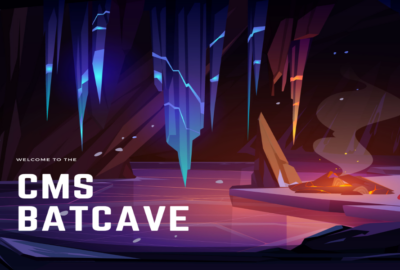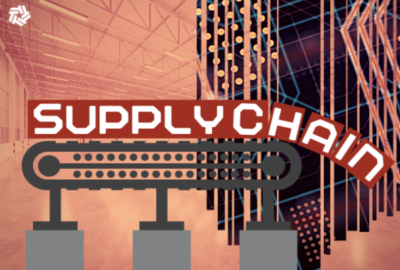Cloud Exchange 2024: CMS’ Andrea Fletcher, Remy DeCausemaker on extending digital services through open source
The Centers for Medicare & Medicaid Services sees The Centers for Medicaid & Medicavalue and ease of open source software in developing new capabilities faster.
The Centers for Medicaid & Medicare Services is one of the biggest software development organizations in the country.
Every day, CMS’ six major centers release code, build new products and tools, and rely on thousands of contractors for help to bring new capabilities to everything from COBOL mainframes to cloud-based services.
It’s why CMS being the first federal agency to launch an open source program office isn’t just significant, it has the potential to transform how agencies across the government develop and manage software.
“We’re going through and reducing burden, reducing costs and reducing duplicate work and effort. These aren’t foreign concepts. We are providing accountability for contractor performance and helping to show metrics and growth around our projects and communities,” said Remy DeCausemaker, open source lead at CMS, on Federal News Network’s Cloud Exchange 2024.
“One of the goals of the Open Source Program Office, and just open source in general, is including folks who are not just consumers of software but also contributors,” he continued, “so giving people an opportunity on the outside to contribute to CMS projects, not just by providing feedback but for finding patches as well as engaging with early career talent pipeline programs, like Coding It Forward, the U.S. Digital Corps, the U.S. Digital Response and other internship and early career opportunities that help get young technologists and early career professionals into public service.”
A recent of example of the power of open source came when Congress required CMS to establish transparency around the cost of hospital services.
CMS used open source technology to develop a hospital price transparency tool, which hospitals use to provide machine-readable lists of all their services and the associated costs.
CMS reduces duplication through use of open source
DeCausemaker said rather than building a bespoke custom application, CMS built a static open source website that’s hosted on the internet, where hospitals can upload and validate their data files.
“It will give them warnings, and it will help them to name the files correctly. It really helps to fill in some of the gaps where the [transparency] policy may not have said at that machine-readable level what the standards needed to be. But we can provide a reference implementation to make it easier for hospitals to comply and make their lives easier for uploading that file,” he said. “Hospitals don’t even need to install it locally. They can just go to one website, which everybody can get to it and where everyone can use it. We’ve already seen contributions coming in from the outside world.”
The hospital price transparency tool example demonstrates the potential of open source software, the cloud and common data standards that collectively can improve federal services.
Andrea Fletcher, chief digital strategy officer at CMS, said the use of open source also addresses a long-time problem of organizations building the same software tools over and over again.
“I didn’t realize how much software we actually develop, and one thing that’s really frustrating is when we build the same thing twice — because we don’t have the resources to do that,” she said. “It’s frustrating for the teams that are building software when they’re watching somebody else build the exact same thing. Why aren’t we working together? It’s because of funding streams or contracts or something that doesn’t really make sense, to be honest. We just want to build it once and be able to reuse it. That takes a total mentality shift of how we build and manage the processes around building software at CMS.”
That’s why, among other reasons, CMS officially launched its Open Source Program Office in January 2024. But open source isn’t new to CMS nor to the government.
The Defense Department has issued memos encouraging the use of open source since the 1980s, including updates in 2003, 2009 and again in 2022.
In 2016, the Office of Management and Budget issued a governmentwide memo encouraging the use of open source and directing agencies to release their code in the code.gov repository.
CMS applies 5-tiered open source maturity model
Fletcher said the time was right for CMS to jump into open source in a much bigger way. She said several ongoing programs, like application programming interfaces for the Blue Button 2.0 initiative or the ability to send data in bulk through the Federal Healthcare Interoperability Resources standard, proved the value of relying on open source.
“We looked at these as like, how do we do more of that? What do we need in order to push ourselves into the next version of open source at CMS?” she said.
Fletcher even pushed back on the idea that CMS having a program office for open source was innovative.
“Building code in the open is how the internet was built. Something like 80% to 90% of all code that is used today is actually open source. It’s the foundation of how we build software,” she pointed out. “What’s different now is, especially in the federal government, recognizing that and saying, ‘We’re going to use this to our advantage.’ So rather than ignoring the open source ecosystem, how do we leverage that? How do we make sure it’s more secure? And then also, how do we build in the open to basically encourage a better health care IT ecosystem? So really looking at this as a mechanism for reaching beyond the government into the immense ecosystem that is health care software development.”
As part of setting up the office, DeCausemaker said CMS adopted a five-tiered maturity model for software development, repository templates, metrics to gauge adoption and participation and a GitHub repository where the code lives.
“We’ve seen folks inside of CMS, our Centers for Clinical Quality and Standards across our Centers for Medicare and Medicaid Innovation — and even outside the department — actually release their first open source repository on GitHub,” he said. “We got to see them using those templates and starting from somewhere. So we know this is valuable inside the agency, and we know that it’s valuable at the federal level. We hope that’s valuable wherever folks can get them and use them. We want to reduce work and effort across the ecosystem.”
DeCausemaker said the DoD Open Source Software FAQ helped dispel many of the myths about open source and helped “sell” the use of open source up the leadership chain at CMS.
Dispelling myths about open source for federal use
Fletcher added they had to emphasize that open source didn’t mean giving away data or opening up personally identifiable information to the public. She explained it’s the code that the data runs on that put on the internet.
“That was big, just by dispelling all of the myths around what open source software is and is not. That took a lot of work,” she said. “Once we got that buy-in, we were off to the races. There are some challenges just around how we manage software in general, how we manage GitHub repositories, and we have a lot of contractors at CMS who tend to be siloed within our centers. We have multiple centers so we’re really trying to break down those silos and work across different components. That’s something that’s very difficult to do in government.”
But even in the short amount of time Fletcher and DeCausemaker have been promoting and pursuing open source efforts at CMS, the impact is starting to become clear.
“We’re looking to raise the floor for all of the open source projects across the CMS ecosystem, and then we’re also looking to raise the ceiling for our existing open source projects or looking for specific guidance and specific goals that they have on increasing adoption or increasing their contributor and developer community,” DeCausemaker said.
“By taking both of those work streams into account and thinking about inbound code (that is code that comes into the agency that we depend on from the outside) and outbound code (that is code that we share with the outside world) — everything in a hospital sort of falls into those two work streams — we get to figure out how to best allocate our limited resources to help our big existing open source projects and build from the ground up to support everyone and raise their digital standard of living.”
Discover more articles and videos now on Federal News Network’s Cloud Exchange event page.
Copyright © 2024 Federal News Network. All rights reserved. This website is not intended for users located within the European Economic Area.
Jason Miller is executive editor of Federal News Network and directs news coverage on the people, policy and programs of the federal government.
Follow @jmillerWFED






